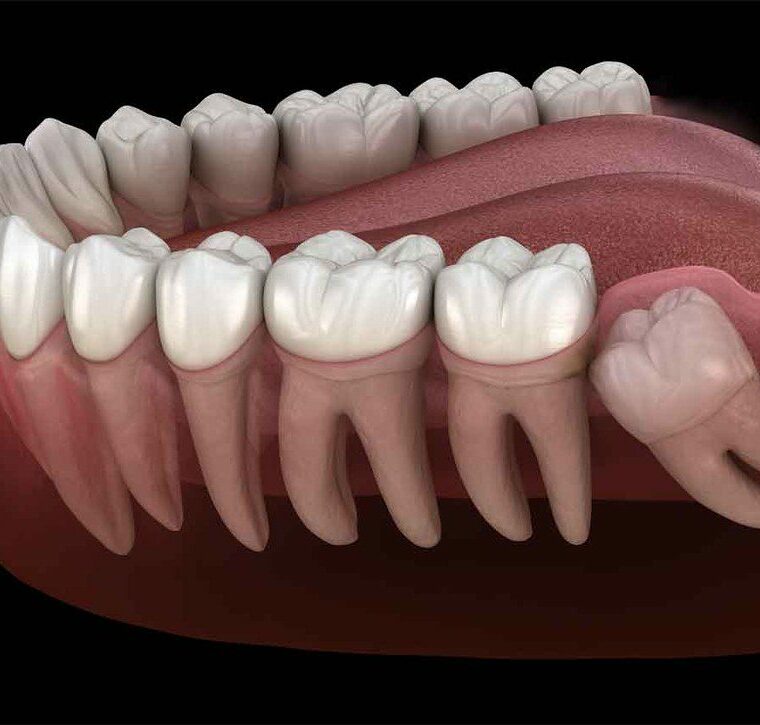Impacted teeth are teeth that fail to erupt properly by the expected time and remain trapped beneath the gums or bone. They can be completely embedded within the jawbone or hidden under the gums, sometimes partially visible in the mouth. These partially visible teeth are called semi-impacted teeth. Impacted teeth most commonly occur in the lower and upper wisdom teeth.
What Are the Intraoral Symptoms of Impacted Teeth?
Common symptoms include tooth pain, swelling around the jaw, unpleasant mouth odor, redness and swelling of the gums, and gum bleeding. If any of these symptoms are present, it is important to consult a dentist promptly for evaluation.
What Causes Teeth to Remain Impacted?
Teeth can remain impacted for several reasons, including:
- Lack of space in the jaw for proper eruption,
- Early loss of milk teeth causing adjacent teeth to shift and block the eruption path,
- Genetic predisposition,
- Untreated infections that hinder tooth eruption.
What Does the Impacted Tooth Surgery Involve?
Before surgery, necessary X-rays are taken to locate the tooth and assess surrounding tissues. If the impacted tooth threatens adjacent teeth or tissues, orthodontic treatment options are considered. If extraction is appropriate, the patient is prepared for surgery. Local anesthesia is applied first. Once numb, the gum tissue is lifted to expose the bone and tooth. If bone covers the tooth, it is carefully removed. The tooth is then extracted, and the gum is sutured closed. The procedure concludes after stitching. The stitches are typically removed one week post-operation. Following post-operative care instructions and medication prescribed by the dentist helps minimize complications and promotes healing.
